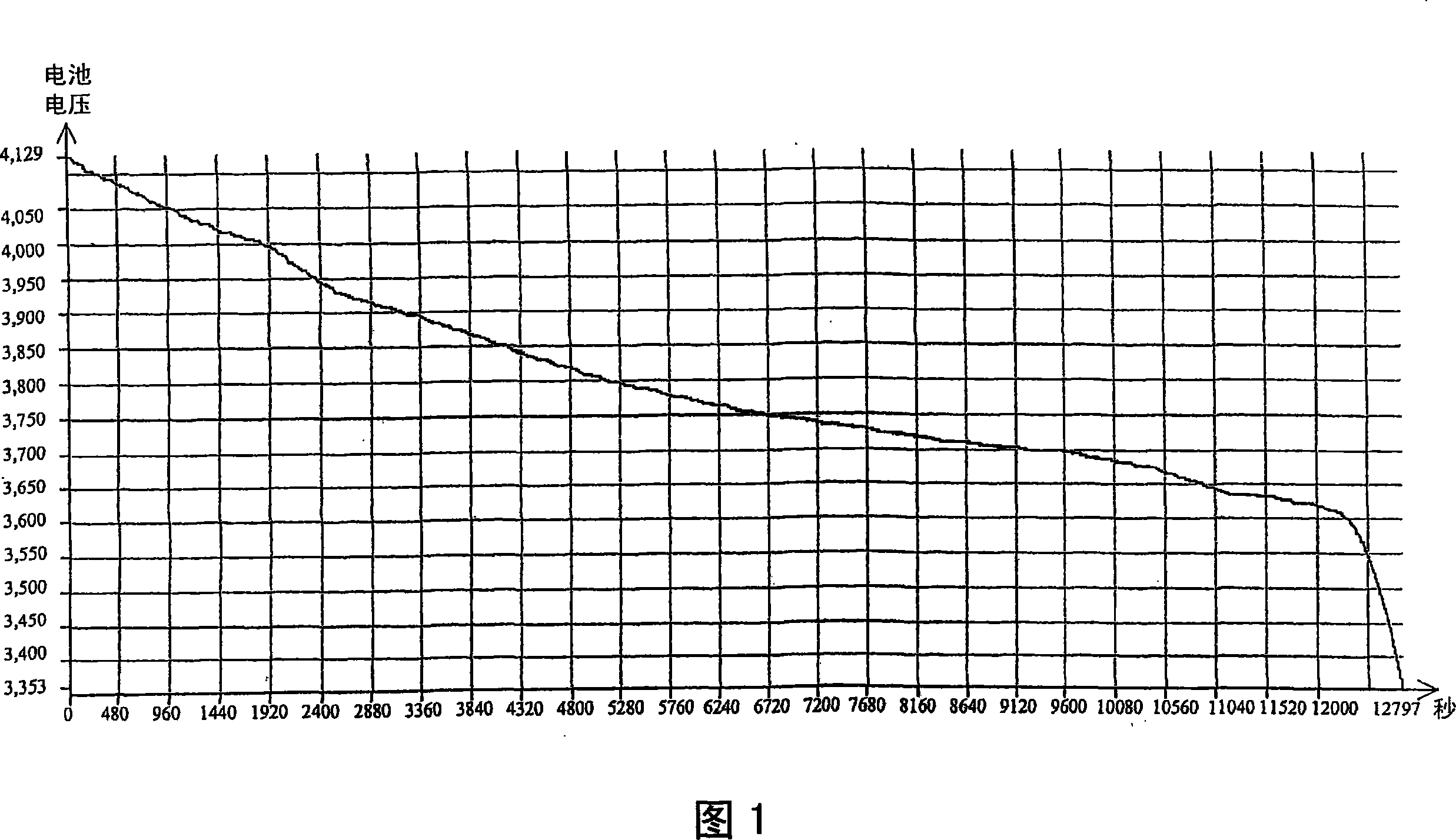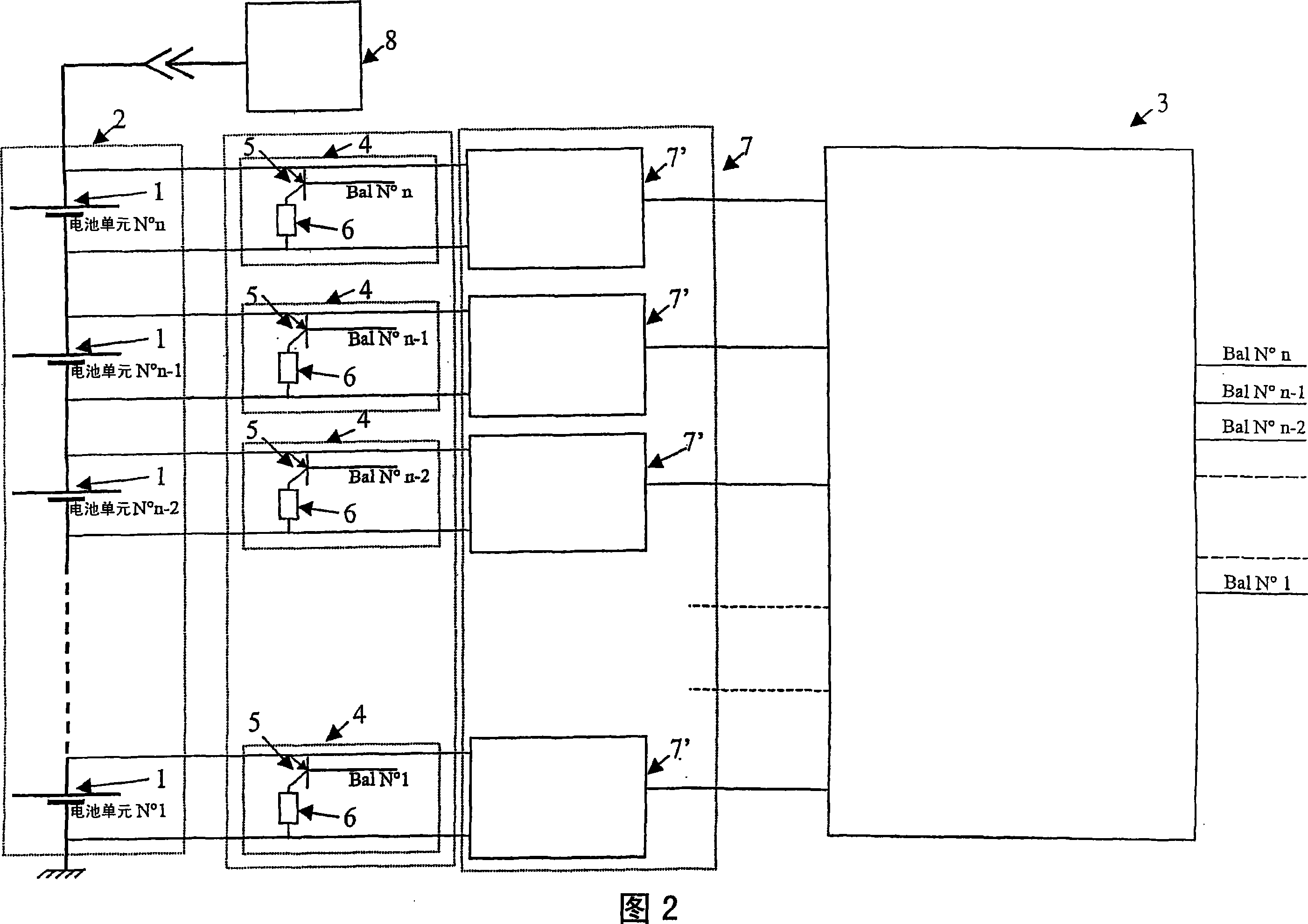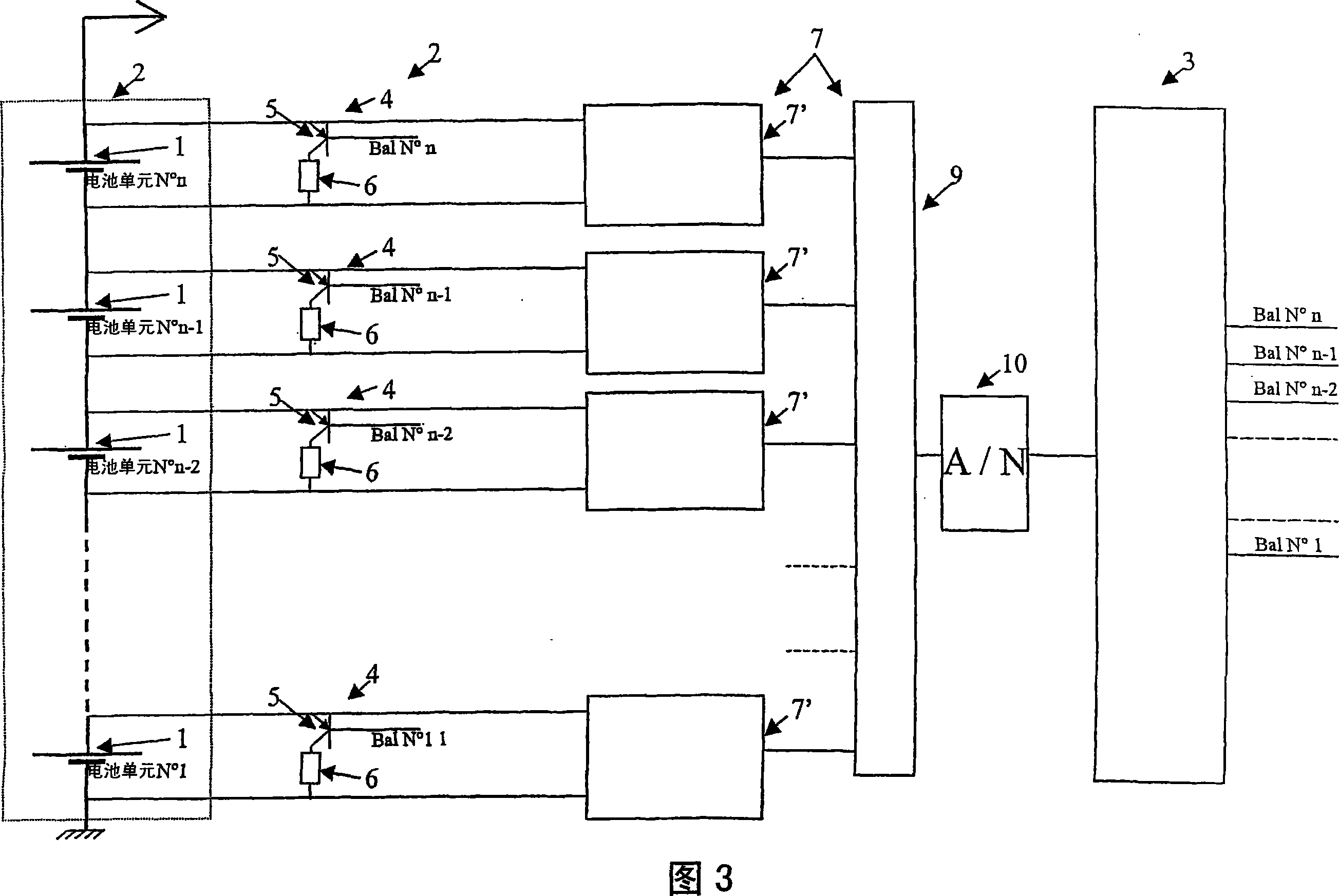Method for the balanced charging of a lithium-ion or lithium-polymer battery
A lithium polymer battery, lithium ion technology, applied in secondary battery charging/discharging, secondary battery, secondary battery repair/maintenance, etc., can solve problems such as short effective charging time, unit overheating, and performance degradation
- Summary
- Abstract
- Description
- Claims
- Application Information
AI Technical Summary
Problems solved by technology
Method used
Image
Examples
Embodiment Construction
[0051] The object of the present invention is a method for charging or balancing charging of n battery cells 1, wherein n≥2, n battery cells 1 form lithium ion or lithium polymer batteries 2 and are connected in series, and each battery cell 1 includes one installed in parallel Or multiple units.
[0052] According to an advantageous embodiment of the present invention, for each charging operation, the method includes at least performing the following operations under the management of the digital processing unit, and the method starts from the time t after the start of charging 1 Start at:
[0053] -Preferably at regular intervals, by measuring the indicator parameters of the energy stored in each battery cell 1 to evaluate the energy stored in each battery cell 1;
[0054] -Comparative analysis of different amounts of energy or different values of measured parameters;
[0055] -Determine the battery cell 1 with the latest charge, or if necessary, determine the battery cell 1 w...
PUM
 Login to View More
Login to View More Abstract
Description
Claims
Application Information
 Login to View More
Login to View More - R&D
- Intellectual Property
- Life Sciences
- Materials
- Tech Scout
- Unparalleled Data Quality
- Higher Quality Content
- 60% Fewer Hallucinations
Browse by: Latest US Patents, China's latest patents, Technical Efficacy Thesaurus, Application Domain, Technology Topic, Popular Technical Reports.
© 2025 PatSnap. All rights reserved.Legal|Privacy policy|Modern Slavery Act Transparency Statement|Sitemap|About US| Contact US: help@patsnap.com



